Decreasing in Knitting
There are three main methods of decreasing one stitch.
The first is to work two stitches together (k2tog or p2tog). Here the stitch remaining creates a right hand slope on the knit side of the material. When worked two or three stitches in from the end of the row, as for example to define a raglan edge or a dart on a skirt, this is called ‘fully fashioning’.
The second method is to knit or purl two stitches together through the back of the loops (k2tog tbl or p2tog tbl). This produces a left hand slope that can also be used when fully fashioning is required. The third method is a slipstitch decrease (sl 1, k1, psso), which also creates a left hand slope. This is often used instead of working through the back of the loops, as it is easier to do.
Work two stitches together
On a knit row (k2tog), insert the right hand needle through two stitches instead of one, and then knit them together as one stitch (Fig.54).
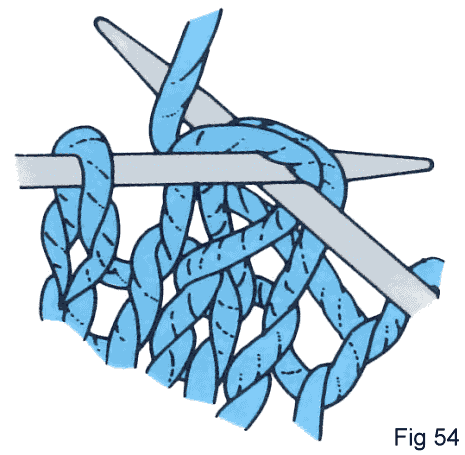
On a purl row (p2tog), insert the needle purlwise through the two stitches and purl in the usual way (Fig.55).
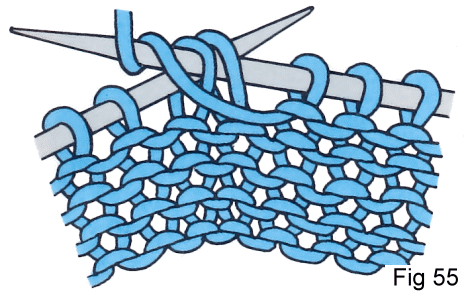
Work two stitches together through back of loop
On a knit row (k2tog tbl), insert the right hand needle knitwise through the back of the loops of the next two stitches on the left hand needle and knit them as if they were one (Fig.56).

On a purl row (p2tog tbl), insert the right hand needle purlwise through the back of the loops and purl them as if they were one (Fig.57).
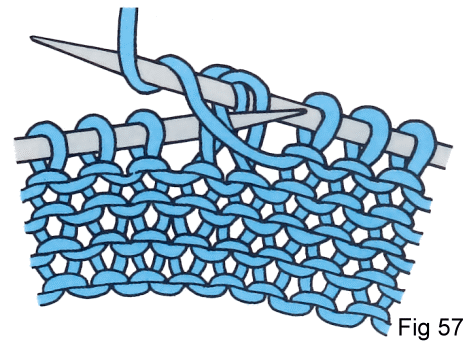
Slip stitch (sl 1, k1, psso)
1. Slip the next stitch on to the right hand needle as if you were going to knit it, then knit the next stitch (Fig.58).
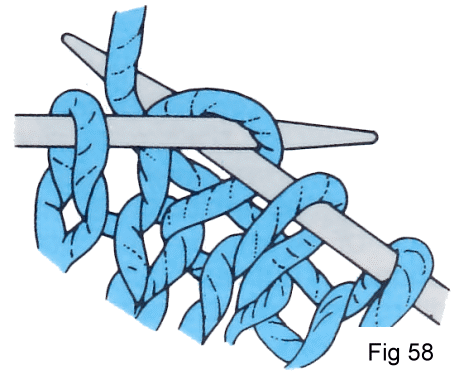
2. Lift the slipped stitch over the knitted stitch and drop it off the needle (Fig.59).
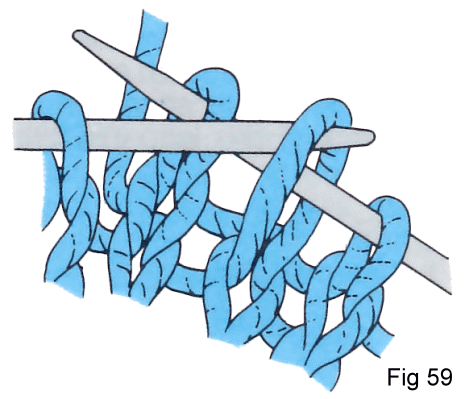
On a purl row, slip one, purl one, pass slipped stitch over (sl 1, p1, psso).
All content provided by TB Ramsden & Co.